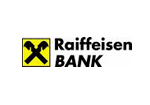PostgreSQL Maestro online Help
| Prev | Return to chapter overview | Next |
Specifying database properties
The next wizard step allows you to set common database options. All fields below are optional, i.e. it is not obligatory for you to fill them.

Owner
You can specify here the name of the PostgreSQL server user who will own the new database, or leave this field blank to use the default user (namely, the user executing the command). By default, only the owner of an object can perform various operations with the object. In order to allow other users to operate it, privileges must be granted. (However, users that have the superuser attribute can always access any object.)
Allow connections
If false then no one can connect to this database. This property is available for PostgreSQL 9.5 and higher.
Connection limit
Defines how many concurrent connections can be made to this database. -1 means no limit.
Is template
If true, then this database can be cloned by any user with CREATEDB privileges; if false, then only superusers or the owner of the database can clone it. This property is available for PostgreSQL 9.5 and higher.
Encoding
Character set encoding to use in the new database. Select an encoding from the drop down list or leave this field blank to use the default encoding.
Template
Specify the name of the template from which the new database is to be created, or leave this field blank to use the default template (template1).
Tablespace
Set the tablespace name to associate with the new database, or leave this field blank to use the template database tablespace. This tablespace will be the default tablespace used for objects created in this database. The default tablespace is created using the template database's tablespace.
| Prev | Return to chapter overview | Next |





 Download
Download Buy
Buy

